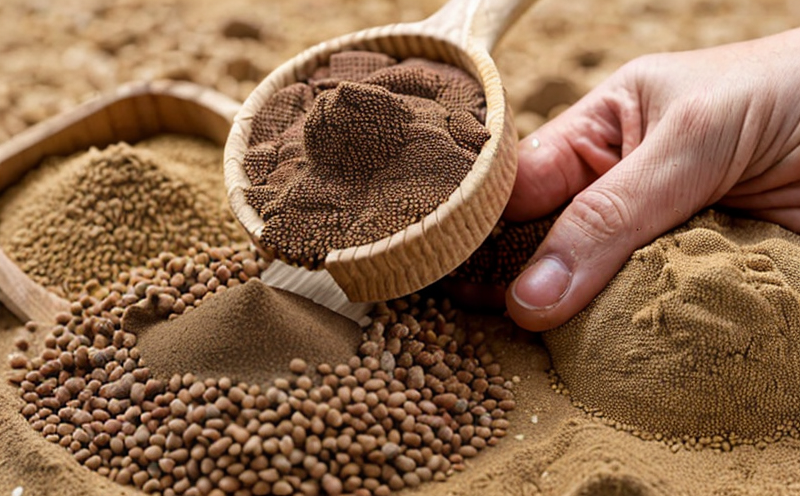Gross Energy Testing in Animal Feed
Understanding gross energy (GE) testing is crucial for ensuring optimal performance of livestock and poultry. Gross energy refers to the total amount of energy available from a feedstuff, which can be measured calorimetrically by combustion. This test plays an essential role in the formulation of animal diets as it helps in determining the caloric content, which impacts the overall health and productivity of farm animals.
In agricultural settings, accurate GE testing is vital for several reasons. Firstly, it ensures that feed manufacturers are providing a product that meets nutritional specifications set by industry standards. Secondly, it allows farmers to make informed decisions about feed purchases based on energy density, which directly affects production costs and animal performance metrics like weight gain or milk yield.
GE testing also contributes significantly towards environmental sustainability efforts within the sector. By optimizing feed efficiency through precise knowledge of GE content, less raw material is required per unit output, reducing waste and resource consumption. Moreover, accurate GE values aid in regulatory compliance with international standards such as ISO 6970:2018 for laboratory methods.
The process involves combusting a known mass of feed sample under controlled conditions to measure the heat released during combustion. This value is then converted into kilocalories per pound or megajoules per kilogram using appropriate conversion factors provided by relevant standards documents like ISO 6970 mentioned earlier.
Applied Standards
The primary standard used for gross energy testing in animal feed is ISO 6970:2018, which specifies the method of analysis. This international standard provides detailed procedures and requirements ensuring consistency across laboratories worldwide. Compliance with these standards guarantees accurate results that are widely accepted both domestically and internationally.
Scope and Methodology
| Step | Action |
|---|---|
| 1 | Weigh a precise amount of feed sample according to specified guidelines from ISO 6970. |
| 2 | Place the weighed sample into a combustion bomb filled with oxygen gas. |
| 3 | Carefully seal and calibrate the combustion bomb before placing it in a bomb calorimeter. |
| 4 | Perform the combustion process, ensuring all safety protocols are followed during operation. |
| 5 | Record the temperature rise resulting from the combustion reaction. |
| 6 | Calculate the gross energy content based on recorded data and applicable formulas outlined in ISO 6970. |
The accuracy of these calculations depends heavily upon proper calibration procedures and adherence to safety measures throughout each step. Proper handling ensures reliable measurements that contribute positively towards maintaining high standards within the agricultural sector.
International Acceptance and Recognition
- Gross energy testing results based on ISO 6970 are universally accepted by regulatory bodies like the European Commission (EC) under EU directives for feed safety.
- The United States Department of Agriculture (USDA), which sets dietary recommendations, also relies on GE values determined according to this standard.





